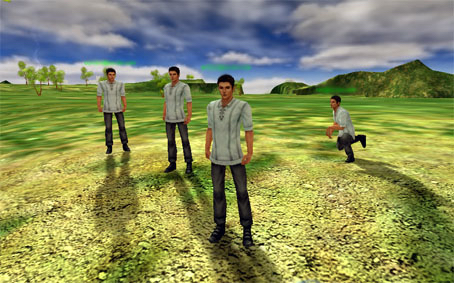(Photo by Flickr user Ian Hughes, used via a Creative Commons license)
I am a startup founder interested in researching and imagining ways technology will transform our world, and last year, I wrote about the top trends that I predicted would be shaping 2021: remote work, ecommerce, 5G and blockchain. The predictions were on point. Remote and hybrid work flourished, ecommerce businesses kept growing while both 5G and blockchain gained increased adoption.
How will your work and personal life be changed by technology in the coming year? Here are the top three tech trends and predictions that we should be looking out for.
Say the word “metaverse” and people might think of a headset — say, Oculus, which transports us into a pixelated world in which we interact with digital avatars. But the metaverse is way more than a headset. Remember the AR game, Pokémon Go? Niantic, the studio that developed it, is now set to create a metaverse that will allow users to earn Bitcoin.
The metaverse is a digital realm combining technology such as virtual reality, augmented reality and video where users exist in a virtual universe. Whether in VR, AR or simply on a screen, the promise of the metaverse is to allow a greater overlap of our digital and physical lives in wealth, socialization, productivity, shopping and entertainment. Streamlining connectivity and making everyday interaction feel more realistic is what this technology aims for.
Bill Gates’ prediction posted on his website in December sums up what the future holds: “I predict most virtual meetings will move from 2D camera image grids … to the metaverse, a 3D space with digital avatars.”
Advertisement
Yes, cryptocurrency and blockchain are here to stay. Last year during this time the crypto market cap was $500 billion, and today it’s $2.4 trillion. The ride to nearly 5x was not easy and smooth, though. Value of the tokens went for wild swings throughout the year while minting countless millionaires (many of whom held and did not sell). With institutional, retail and the mom-and-pop investors flocking, the market is probably heading to better days.
Nonfungible tokens (NFTs), decentralized finance (DeFi) and decentralized autonomous organizations (DAOs) are all here to stay while the underlying technology of blockchain will continue to be a disrupting force, be it for logistics, cross-border payments, identity management, airport security, AI, big data or the cloud.
US cities and governments have begun to embrace this technology to finance municipal services, fund new programs and pay government workers. Miami’s MiamiCoin has made the city more than $7 million so far, a potential game changer for revenue collection. And Mayor Hillary Schieve of Reno, Nevada has proposed a plan that includes selling NFTs to support public art and using DAOs to sell crypto-based stakes of city-owned properties to investors.
Governments have benefits of integrating crypto in that it puts transactions into public view, boosting transparency and reduces bottleneck as the process is automated. It also gives them an edge over other cities, with a reputation for being fast-forward thinkers.
COVID-19 vaccines were developed and gained approval in record time. Next, through the ever-growing biotech sector, we hopefully will see vaccines for other critical diseases get faster approval and quicker mass adoption. Philanthropists, governments, researchers, scientists and entrepreneurs are set to guide the decade into medical and vaccine prosperity.
Telehealth’s acceptance and adoption by society in the last few years (prompted by COVID) will also be a driver in the medical space. It helped us save time for a commute as we often found ourselves driving 30 minutes and then waiting another 30 for a 10-minute doctor’s appointment. Being able to sit at home and speak to our doctors on our smartphones made us feel more comfortable than a clinical setting. Staying home also reduces the risk of any virus transmission.

